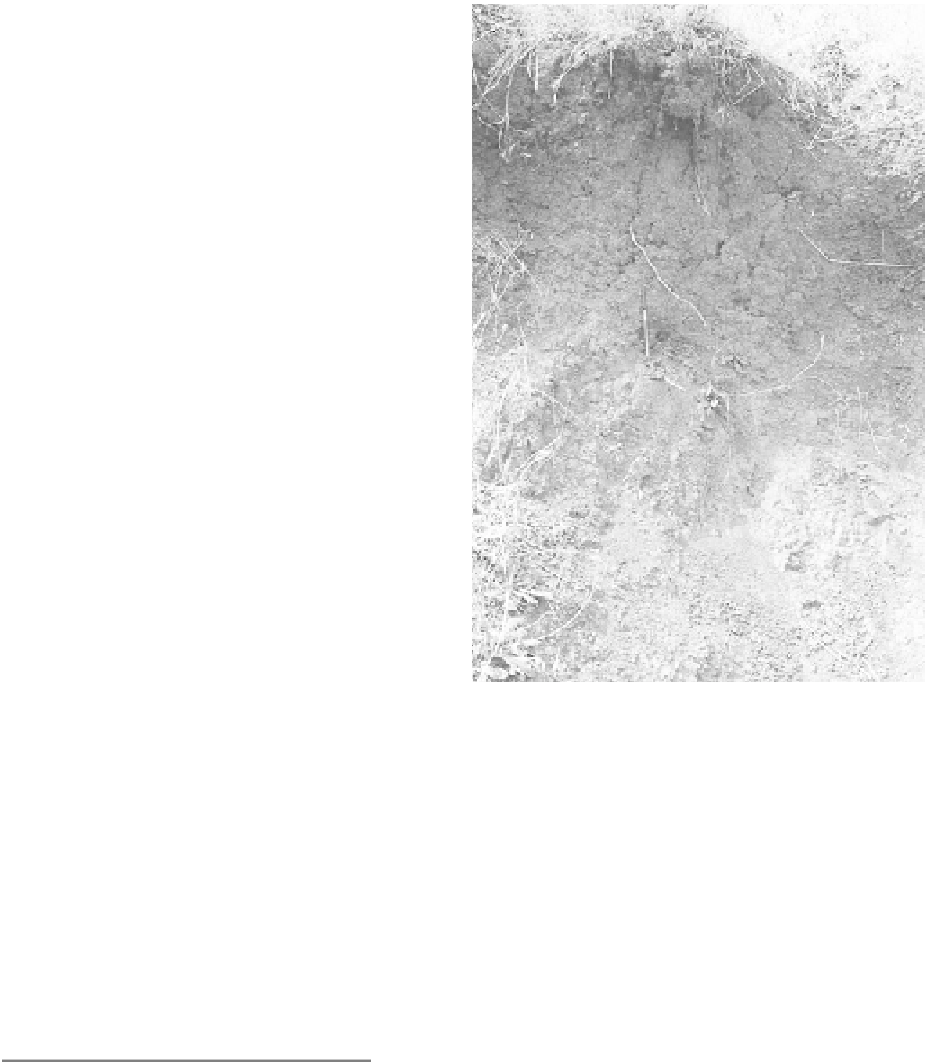Agriculture Reference
In-Depth Information
Figure 9.12
Profile of a Red Cambrian Soil
(Krasnozem) under vines at
Heathcote, central Victoria (scale
15 cm). Photograph by the
author. See color insert.
Approximately 50 km to the east of Heathcote is the Nagambie Lakes Sub-
region. The soils here are mainly alluvial sandy loams over clays, deposited in a
complex pattern by the Goulburn River. Chateau Tahbilk Estate makes some wine
from Shiraz vines that are 141 years old. These vines are growing on a well-drained
sandy ridge (fig. 9.13), which enabled them to survive the phylloxera invasion that
occurred in the late nineteenth century. As in many other areas, the best wines
tend to come from the oldest vines—typically those that are deep-rooted and
which naturally achieve good balance year after year.
Concluding Remarks
9.8
The overriding conclusion to be drawn from the preceding chapters is that vine-
yard soils around the world are exceedingly diverse. Even where there is a com-
mon parent material, such as the much-favored limestone, the soils are variable,
depending on the following factors:
• The permeability and degree of fracturing of the rock, which influences the
rate of water percolation and ease of root penetration
• The quantity and nature of non-calcium carbonate impurities in the
limestone (various forms of SiO
2
, Fe and Al oxides, and clay minerals)
• The prevailing climate and site topography, which influence the rate of
weathering of the limestone and leaching of weathering products

